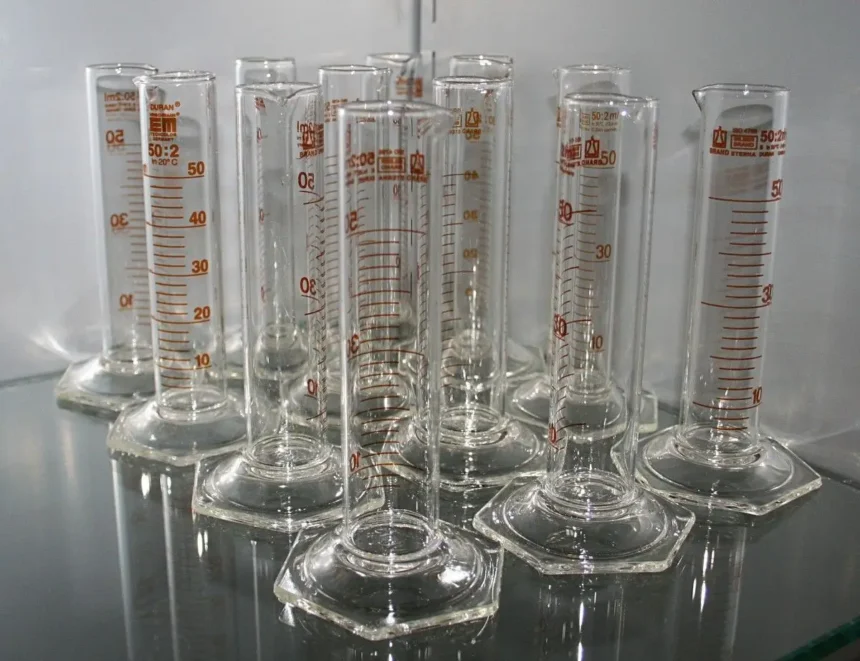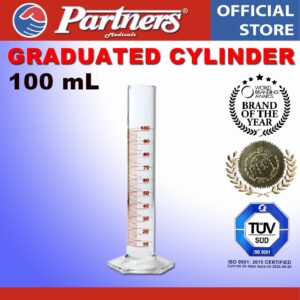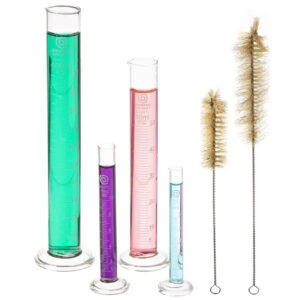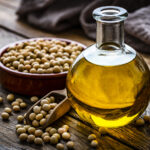Graduated Cylinder: A Simple Tool That Changed Science Forever
If you’ve ever stepped into a science lab, you’ve probably seen a tall, narrow tube with numbers printed along the side. That simple object is called a graduated cylinder, and while it may not look like much at first glance, it has played a huge role in scientific discoveries for centuries.
From chemistry classrooms to cutting-edge research labs, the graduated cylinder helps scientists do something crucial: measure liquids accurately. But how did this tool come to be? Why is it so important? And what makes it different from other measuring tools? Let’s dive into the story.
A Humble Beginning
Long before the invention of high-tech lab equipment, people were already experimenting with liquids. Ancient civilizations used jars and bowls to mix herbs, medicines, and perfumes. But there was one big problem—they couldn’t measure the exact amount of liquid they were using.
That all began to change in the 17th century, when science started to grow more precise. Early chemists and inventors realized that to repeat experiments and share results, they needed to measure things more accurately. That’s when the idea of the graduated cylinder started to form.
The first graduated cylinders were simple glass tubes marked with hand-drawn lines. Each line showed a certain volume, like 10 milliliters or 50 milliliters. Over time, the markings became more accurate, and the design improved. The tool we use today—narrow, tall, and marked with precise graduations—was born.
How a Graduated Cylinder Works
At its core, a graduated cylinder is very simple. It’s a straight, narrow container with volume markings (called “graduations”) running along the side. These markings allow users to measure the volume of a liquid with reasonable accuracy.
To use one, you simply pour the liquid into the cylinder and check where the top of the liquid rests. This top surface is called the meniscus, and you always read the measurement at the bottom of the curve. This small detail—reading the meniscus—makes a big difference in getting accurate results.
Graduated cylinders come in various sizes, from 10 mL for small measurements to 1000 mL (or more) for larger amounts. They are usually made of glass or plastic, depending on what kind of liquid is being measured.
What Makes It Different?
You might wonder—why not just use a beaker or a measuring cup? It turns out the graduated cylinder has some special advantages.
-
Greater accuracy:
Because it’s tall and narrow, even small changes in volume are easy to see. -
Consistent readings:
The straight sides and precise markings help ensure consistent results every time. -
Easy to handle:
Most graduated cylinders have a spout for pouring and a base for stability, making them practical and user-friendly.
For serious science work—like chemistry experiments, pharmaceutical testing, or environmental studies—accuracy and consistency matter a lot. That’s why the graduated cylinder is the go-to tool.
A Day in the Life of a Graduated Cylinder
Imagine a high school chemistry class. Students gather around lab tables, ready to begin an experiment. The teacher hands out graduated cylinders and asks them to measure exactly 50 mL of water. The students carefully pour, crouch down to eye level, and read the meniscus. For many, this is their first lesson in scientific accuracy.
Now fast-forward to a professional lab. A scientist is preparing a new drug formula. Even a small mistake in measuring could lead to incorrect results. The graduated cylinder, now perhaps digital and ultra-precise, helps ensure everything is just right.
From beginners to professionals, this simple tool helps build confidence and trust in the results.
Beyond the Lab
Though commonly used in science, the graduated cylinder has made its way into other fields too.
-
Cooking and food science:
Measuring exact amounts of ingredients, especially for testing new recipes or creating food products. -
Environmental testing:
Checking the purity of water or analyzing pollutants. -
Perfume and cosmetics:
Blending the perfect fragrance requires precise measurement of liquids.
It might look like just a tube, but the graduated cylinder’s uses are surprisingly wide-ranging.
Safety and Care
Even though it’s simple to use, there are a few important things to keep in mind when handling a graduated cylinder.
-
Always place it on a flat, stable surface.
-
Clean it before and after each use.
-
Never use a glass cylinder with highly corrosive chemicals unless it’s made from special lab-grade glass.
-
Read the volume at eye level to avoid parallax errors (reading the wrong line due to the angle).
Proper care ensures accurate readings and prevents accidents in the lab.
The Silent Hero of Science
Think about some of the greatest discoveries in science—vaccines, new elements, space missions. Behind each of those breakthroughs are experiments that required careful measurement. And in many of those experiments, a graduated cylinder played a quiet but vital role.
It doesn’t get much attention, and it doesn’t look flashy. But without it, accurate science would be a lot harder. It’s a reminder that sometimes, the simplest tools can make the biggest difference.
conclusion
The graduated cylinder may not be the star of the science lab, but it’s definitely one of the most important tools. Its story is one of innovation, simplicity, and reliability. From its humble beginnings centuries ago to its role in modern research, it continues to support the world of science—quietly but powerfully.
So the next time you see one sitting on a shelf, take a moment to appreciate the precision and history behind that clear cylinder. It’s not just a container. It’s a symbol of accuracy, discovery, and the pursuit of knowledge.







